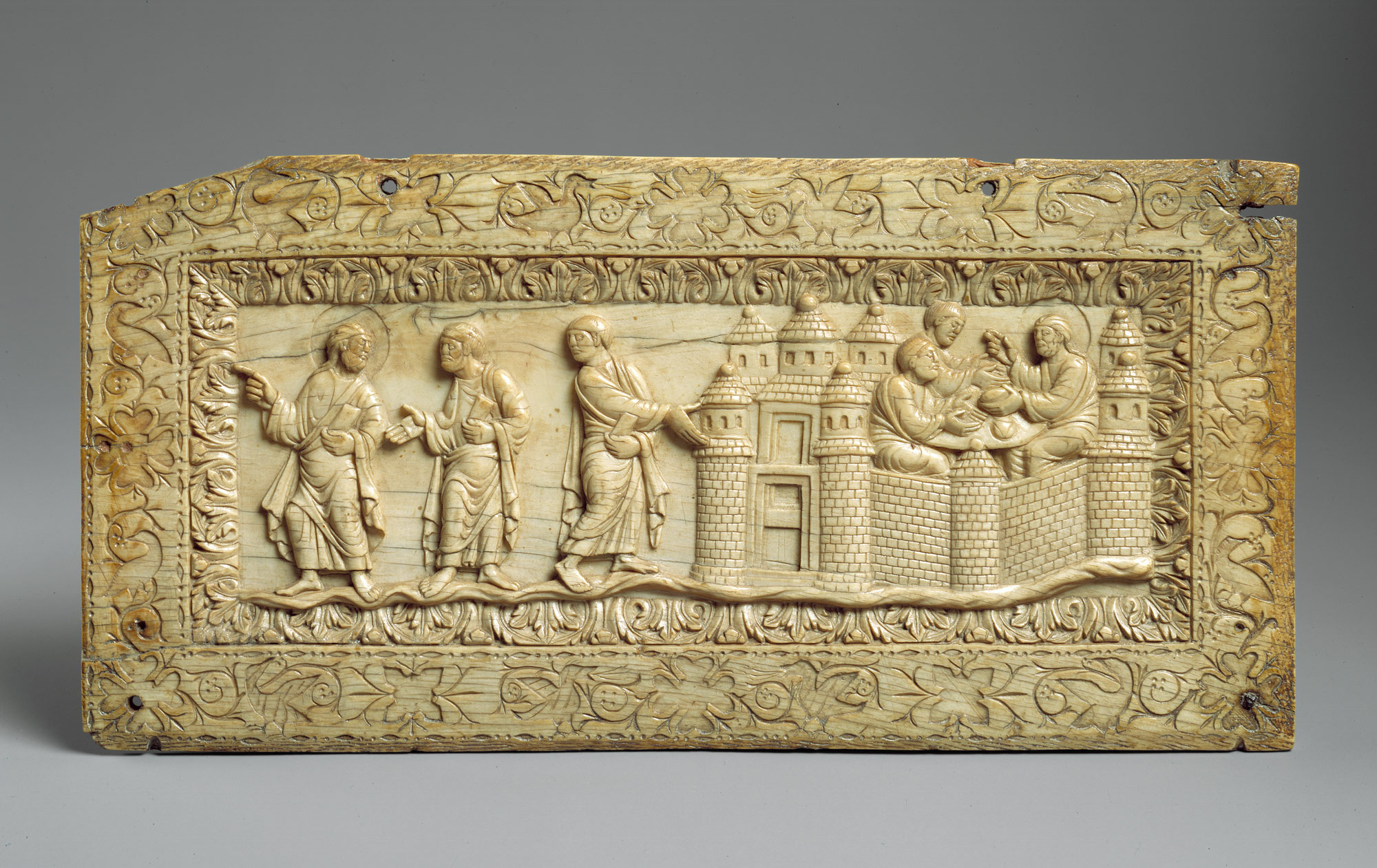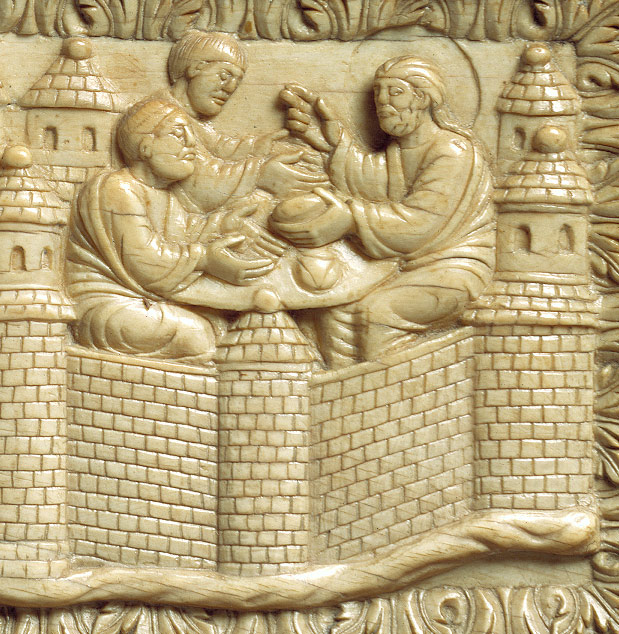
A Late Antique Ivory Carving. 1998. Photograph. History and Science for Kids. By Dr. Karen Carr. Kidipede, 1998. Web. 5 Dec. 2012.
One thing I find interesting about Medieval art is the use of ivory. Ivory was obtained from many different types of animals, but the ivory of an elephant has been seen as the easiest to work with. The above piece was one I found especially interesting because of the character's Roman features. The eyes of the people in this carving are very large, must like the statue of Constantine we discussed in class. People during this time made art to resemble Roman art so that people would know they were Roman Christians. They continued to make art identifying themselves as Romans as late as 900 AD, long after historians believe Rome fell.

"Plaque with Emmaus Scenes [French] (1970.324.1)". In Heilbrunn Timeline of Art History. New York: The Metropolitan Museum of Art, 2000–. http://www.metmuseum.org/toah/works-of-art/1970.324.1 (September 2009)
This piece is an ivory plaque made in 850-890 AD, it is believed to be of French origin. In the scene Jesus, who has just been resurrected, appears to two of his disciples who do not recognize him, but invite him to dine with them. On the right you can see the three having dinner inside the walls of Emmaus, and it is here that Christ's identity is revealed. I like that the artist used sunken relief to create the halo around Christ's head so that the person looking at the piece would not mistaken him for one of the disciples. The one thing I keep finding every interesting about the Medieval art is the artist's attention to detail. For example, the walls of the city. The artist created the illusion of the walls by slanting the bricks of the wall in a diagonal direction to create a 3D effect.

"Plaque with Emmaus Scenes [French] (1970.324.1)". In Heilbrunn Timeline of Art History. New York: The Metropolitan Museum of Art, 2000–. http://www.metmuseum.org/toah/works-of-art/1970.324.1 (September 2009)
Also, adding to this illusion are the towers which are suppose to be farther back in the city are placed behind the ones over the closest wall. This gives the illusion that there is a wall connecting the two towers, and that within the walls are Jesus and his disciples.
No comments:
Post a Comment